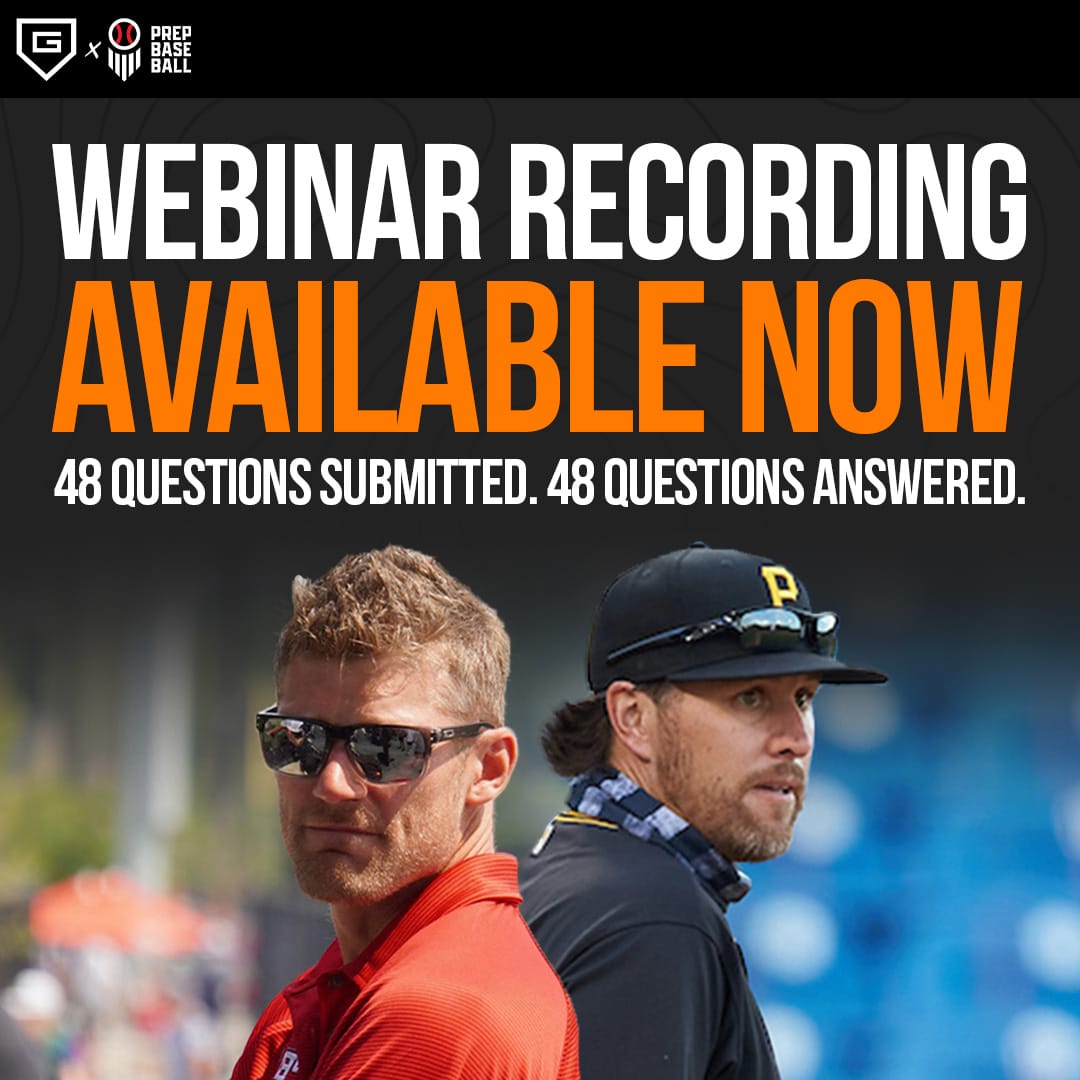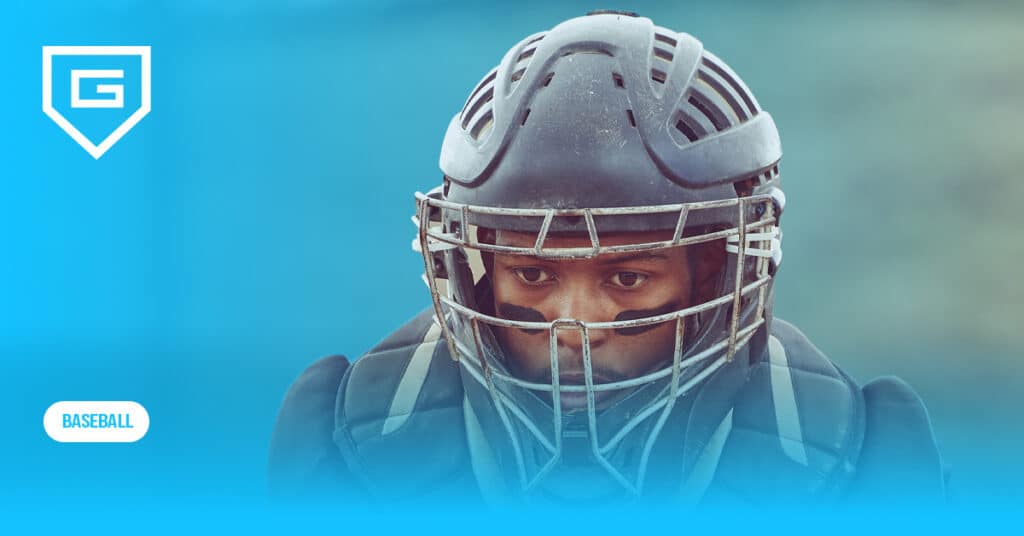10 Baseball Pitching Drills to Increase Accuracy and Velocity
Reading Time: 8 minutes
Reading Time: 8 minutes
Pitching is more than just throwing the ball as hard as possible; it requires precision, power, and refined mechanics.
Focused practice and various pitching drills are essential to effectively aim for the corners of the strike zone or increase the velocity of a fastball.
Wearable technology in sports allows pitchers to focus on execution like never before. Coaches use tools such as the GoRout’s baseball communication device to provide instant feedback, simplify pitch calling, and streamline scouting reports to help pitchers attack hitters more effectively.
However, regardless of how advanced the technology may be, effective pitching still relies on solid drills focused on accuracy and velocity.
Understanding the Fundamentals of Baseball Pitching Drills

Baseball pitching requires strength, precision, and control. To improve their performance, pitchers upgrade their skills through specific drills. Proper pitching mechanics, balance, and control are crucial components for becoming a great pitcher.
Proper pitching mechanics
At the heart of every great pitcher lies proper mechanics. These include the grip of the ball and arm action, body positioning and follow-through, and the right pitching motion and shoulder rotation to strengthen pitch velocity.
Good mechanics help the pitcher use their body to generate power and accuracy. Pitchers refine arm motion, leg drive, and posture to protect themselves from arm injuries with consistent velocity and command of the ball.
The role of balance and control
Balance creates a stable stance throughout the pitching motion. Pitchers use control to deliver the ball through the strike zone.
Pitchers who consistently balance their weight throughout each phase of their pitching motion are more accurate and generate more force behind their pitches. These fundamental skills create repeatable, powerful, precise pitches through the strike zone.
Warm-up and Stretching Routines
A good warm-up routine prepares the body for throwing and minimizes the risk of arm injuries. Stretching exercises focused on arm care and injury prevention improve flexibility and performance and reduce strain during practice and games.
Dynamic stretching exercises
Dynamic stretching includes active movements that gently increase the range of motion and prepare muscles for intense activity. Pitchers do arm circles, walking leg lunges, and high knees to engage the core, legs, and upper body. This stretch position activates the muscles used in pitching, improves blood flow, and increases joint mobility.
Arm care and injury prevention
Taking care of the arm is the most important safety precaution for any pitcher. The repetitive motion of throwing can lead to wear and tear. Stretching and strengthening exercises that target the shoulder, elbow, and forearm support arm health. Resistance bands, for example, strengthen the rotator cuff, while forearm stretches prevent elbow tendinitis.
10 Essential Baseball Pitching Drills

Baseball pitchers must consistently improve their technique, accuracy, and pitch velocity. Baseball pitching drills build these skills and develop muscle memory, control, and power on the mound.
Whether you’re coaching beginners or experienced players, a drill helps a pitcher focus and execute during games.
Here are ten baseball pitching drills to increase accuracy and pitch velocity on the mound.
Towel Drill
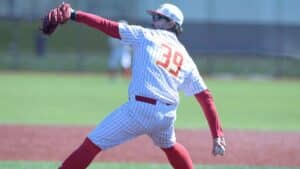
The towel drill is a popular pitching exercise to help pitchers with arm speed and extension without using a ball. The pitcher holds a towel instead of a ball and goes through their normal pitching motion. They aim to “snap” the towel at a target in front of them. This drill helps build muscle memory and ensures a complete follow-through.
Benefits
- Improves arm extension and follow-through for more accurate pitches
- Builds arm speed and power without the stress of throwing a ball
- Reinforces proper balance
Wall Drill
The wall drill focuses on balance, alignment, and mechanics during a pitcher’s delivery. A pitcher practices close to a wall to keep their body on a linear path to prevent drifting or over-rotating. The goal is to complete the pitching motion without hitting the ground or wall.
Benefits
- Improves balance and body alignment during the pitching motion
- Encourages a straight, efficient delivery to prevent over-rotation
- Better muscle memory
Rocker Drill
This baseball pitching drill is for better lower body engagement and a smooth, powerful delivery. It emphasizes proper weight transfer between the back leg, front leg, and front foot. Pitchers can generate momentum and drive through the pitch. The pitcher rocks back and forth on their legs on flat ground before delivering a pitch.
Benefits
- Lower body drive and power through delivery
- Smooth and efficient weight transfer for better pitch velocity
- Better hip rotation and timing
Broomstick Curveball Drill
The broomstick curveball drill is to master the spin and release of a curveball. A broomstick is held at about shoulder height and the pitcher goes through the motion of throwing a curveball. They should focus on releasing the ball above the stick and finishing down below it. This drill helps pitchers feel out their release point on a breaking ball and emphasize finishing the pitch.
Benefits
- Improves curveball spin
- Reinforces the wrist snap and finger positioning for control
- Creates muscle memory for the release point
Net Drill
This pitching exercise works on accuracy, control, and follow-through by throwing directly into a net at a short distance. Pitchers repeat the motion and aim for consistent spots on the net without worrying about the outcome of the throw.
Benefits
- Pitchers are more accurate when hitting targets on the net
- Builds muscle memory through repetitive throwing
- Work on consistency without the distraction of balls or strikes
Hop Back Drill
The hop-back baseball drill is for lower body explosiveness and balance. Make a small hop backwards before moving into the pitch to practice weight transfer, body control, and generating momentum. It helps pitchers get a better feel for the energy they can create in their lower half throughout their windup and delivery.
Benefits
- Increases lower body explosiveness
- Improves balance and control
- Reinforces proper timing and coordination between the lower and upper body
2 Ball Curveball Drill
This drill helps master the curveball’s spin and release point. Pitchers hold two baseballs in their hands while simulating the curveball motion. This forces them to exaggerate the wrist snap and truly feel the right release point.
Benefits
- Better wrist snap and finger pressure to generate spin
- Helps feel and consistency of the curveball release point
- Strengthens grip and finger control
Follow Through Drill

Use this drill to improve a pitcher’s mechanics after releasing the ball to finish the front foot, knee, shoulders, and drive leg correctly. A complete follow-through gives balance, protects the arm, and produces power and accuracy.
Benefits
- Teaches a smooth, balanced follow-through
- Reduces the risk of injury with good body alignment
- Heightens velocity with a full transfer of energy from the lower body through to the release
Bucket Drill
The bucket pitching drill strengthens balance, body control, and proper stride length. Pitchers practice their motion from a starting position seated on a bucket. They have to drive through their legs to get up off the bucket, using their hips and core to finish their throwing motion. This drill strengthens the lower half of a pitcher and promotes consistency in mechanics from the bump.
Benefits
- Builds balance and stability
- Encourages the correct stride length and posture
- Helps pitchers with timing and coordination between their lower and upper body
Figure Eight Drill
The last drill focuses on arm action, rhythm, and fluidity. Pitchers move their arm in a figure-eight motion before throwing for smooth, continuous arm movement. Engage in proper timing and efficient arm motion throughout the pitch delivery.
Benefits
- Have smooth, fluid arm action
- Improved rhythm and timing
- Enhanced arm flexibility and mobility
Implementing the Baseball Pitching Drills in Your Practice Plan
To get the most out of your pitching drills, you must integrate them into a well-rounded practice plan for different age and skill levels.
Creating a balanced routine
Create a balanced practice routine that targets different aspects of pitching. Use a mix of drills for accuracy, velocity, and mechanics and alternate between them to prevent fatigue.
Adapting drills for different skill levels and ages
Not all pitchers develop at the same rate, so it is important to modify drills to accommodate different skill levels and age groups.
Younger, less experienced pitchers focus on foundational drills like the towel drill or follow through drill to build core mechanics and balance. Advanced players need more demanding drills like the bucket drill or rocker drill to improve timing and power.
Sports coaching technology helps coaches track individual progress and adjust drills based on each player’s needs for a personalized training experience.
Integrating GoRout into Baseball Practice
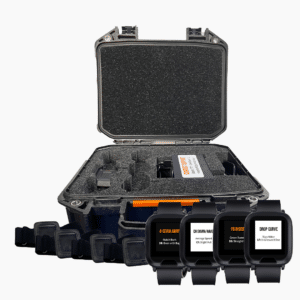
GoRout’s sports communication system is changing how coaches and players communicate on the field. These advanced wearable devices provide a seamless electronic pitch-calling system and eliminate the need for traditional baseball coaching signs or verbal cues for better efficiency and performance.
GoRout equipment includes electronic player devices and a coaches app to send play calls, bake scouting into opposing lineups, and communicate offensive plays. This streamlines pitch calls, shifts, and situational defense with a single tap.
Hundreds of testimonials speak about GoRout’s simplicity and effectiveness. Coaches all over the country praise how it reduces confusion on the field and improves the pace of play, decision-making, and more wins throughout the season.
Get a quote today.
How GoRout baseball pitch calling system works
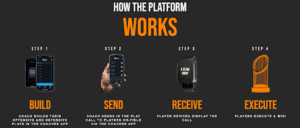
GoRout connects wearable player devices with a coach-controlled app that updates in real time. Coaches can instantly communicate bunts, steals, or hit-and-run scenarios without disrupting the game plan.
The baseball wristband system displays information directly to each player to minimize errors and eliminate complicated verbal commands or memorized indicators. This direct line of communication makes quick in-game adjustments easy.
Benefits of the GoRout baseball pitch calling system
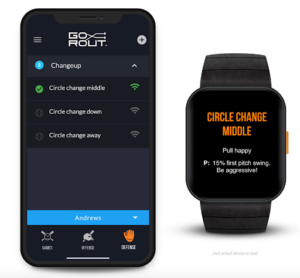
Here are some reasons why GoRout is the best solution for your baseball team.
- Immediate configuration and connectivity: GoRout operates without Wi-Fi, using GoRout Air™ for smooth communication on any field, without the hassle of routers or syncing. This is ideal for baseball teams playing in locations with limited or no internet access.
- Weather-resistant and durable: GoRout’s year-round adaptability and rugged design can handle extreme conditions such as rain, heat, cold and dust. Its bright display makes the wristband readable in any light, keeping communication clear in all environments.
- Advanced security features: End-to-end encryption prevents pitch calls or offensive signals from being picked by opponents. Each device has a privacy screen, so the information remains visible only to the intended player.
- Comprehensive warranty: GoRout backs its devices with a 100% full-replacement warranty. Teams can have peace of mind knowing that equipment breakage is fully covered, along with 24/7 customer support via phone, text, or video.
GoRout’s electronic pitch-calling system simplifies game planning and execution on game day, allowing players to focus on their role and win more games.
GoRout is excellent for any team looking to boost efficiency, eliminate mistakes, and stay ahead with the latest communication technology.
Monitoring Progress and Making Adjustments

Continuous improvement is key for pitchers. Monitor progress regularly to improve and make necessary adjustments to pitching mechanics, accuracy, and velocity.
Use the drills above to correct a pitcher’s form, adjust their release point, or fine-tune their approach to attacking hitters. They can accelerate learning and keep pitchers on track with their development goals.
Conclusion
Improving as a pitcher takes dedication and consistent effort. The right drills allow pitchers to see real progress in accuracy and velocity.
The above ten drills sharpen mechanics, increase control, and develop the power needed on the pitching rubber.
Modern baseball coaching tools like the GoRout’s baseball pitch-calling system simplify communication on the field so players can focus solely on their mechanics and execution. This technology allows for real-time feedback to each player so that coaches can keep their guys locked in throughout the season.
FAQs About Baseball Pitching Drills
Let’s answer the most common questions about baseball pitching drills.
What is the best way to practice pitching?
The best way to practice pitching is by doing baseball pitching drills like the wall drill, bucket drill, and towel drill.
How do you train for pitching in baseball?
Pitchers train for pitch delivery with a good warm-up, many throwing drills, a balance point, and improving their posture.
How hard should a 12-year-old pitcher throw?
A 12-year-old’s fastball can be 50-60 mph on average. Once they get into teenage years, it is more likely to increase to around 70 mph.




